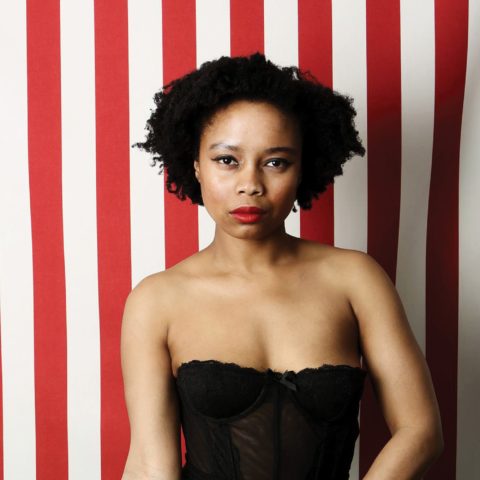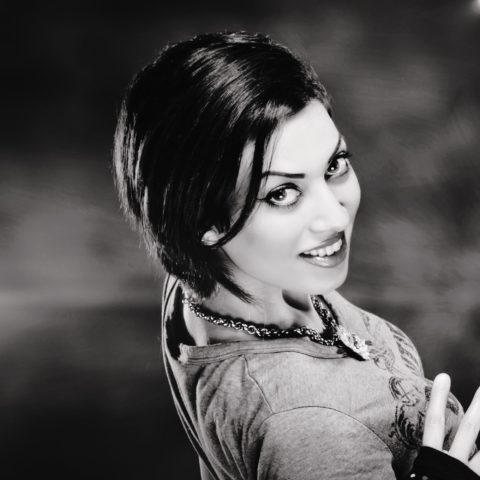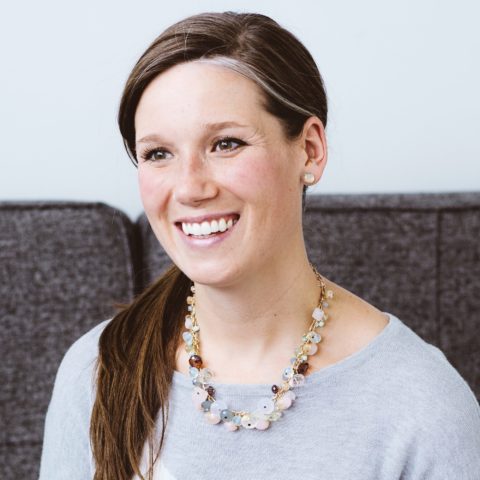The New First Ladies in Culture, Sciences and Sports
The performers, activists and athletes who are changing the world.

Dainty Smith
The founder of Canada’s first all-black burlesque troupe.
When Toronto-based performer and speaker Dainty Smith launched Canada’s first all-black burlesque troupe, she says people were surprised. “I worried people wouldn’t come to our shows, so I really had to talk back to that self-doubt.” Smith doesn’t have any formal dance training, but she says she was inspired to take it up after she saw footage of Josephine Baker, the first lady of dance in the 1920s. At the time, Baker was the most successful African-American entertainer working in Europe. “It was a ‘light-bulb’ moment for me,” explains Smith. “Because of her, I changed how I viewed myself as a young black woman. It gave me permission to consider myself pretty—possibly even beautiful.” She jumped straight into burlesque after that and has not looked back, although she’s the first to admit that the art of exposure is a tricky business. “Black women’s bodies are hyper-sexualized, and we are often not in control of how we are viewed,” she explains. “I felt it was important to have a troupe for women of colour so we could show folks that we are not all the same and we certainly don’t all experience the world in the same way.” But even though exposing oneself has become commonplace, Smith argues that it can still offer a feeling of connectedness and intimacy. “There are serious negative effects to overexposure, but exposing yourself can also be about vulnerability,” she says. “Burlesque allowed me to reclaim my body as mine. Self-love isn’t a 30-second Dove commercial; things don’t get resolved that easily. But if me being openly vulnerable makes other women feel excited about their beauty and bodies, then it’s complicated but worth it.” —Aliyah Shamsher

Paradise Sorouri
The first female Afghani rapper.
In a region where both men and women are prosecuted daily for speaking their minds, it’s no small feat that Afghanistan’s first female rapper has risen to fame. Her debut hit, “Nalestan,” is dedicated to her younger cousins who committed suicide. (Sorouri herself has endured both public and private beatings and exile.) After speaking at Talking Taboo, an international conference for women’s rights, she attests that she will not stop rapping. (She has since settled in Berlin with her husband.) In fact, her voice will only grow louder. — A.S.

Buffy Sainte-Marie
An unexpected digital trailblazer.
When Buffy Sainte-Marie took a 16-year break after releasing Sweet America in 1976, the business she returned to in the ’90s was very different. But Sainte-Marie was still ahead of her time. After recording Coincidence and Likely Stories (1992), she became the first musician to send an album digitally to her London studio via a dial-up modem. (The album also combined, for the first time, electronic sounds with Aboriginal chants.) —A.S.

Brooke Henderson
The youngest Canadian to win an LPGA tournament.
After Brooke Henderson peaked at number two in the Ladies Professional Golf Association (LPGA) rankings in 2016, I think we can guess what the 19-year-old golfer’s next career goal is. As only the second Canadian woman to win a major (Sandra Post did it first in 1968), Henderson is one in a wave of players who are elevating women’s golf to popularity levels currently being enjoyed by female tennis players. “The LPGA is similar to tennis in that it plays a very full schedule all across the globe,” says Henderson. She took part in an exhausting 31 golf events in 2016 and won close to $1.8 million. “The prize money and television numbers continue to increase year after year,” she says. “It’s incredible to see how women’s golf is received in many countries—particularly in Asia, where they treat the top players like rock stars, which is pretty cool.” To be fair, she did receive a standing ovation when she attended an Ottawa Senators hockey game in December. —Jacquelyn Francis

Natalie Panek
The rocket scientist who hopes to be an astronaut with the Canadian Space Agency one day soon.
For Natalie Panek, 32, her out-of-this-world aspiration to become an astronaut isn’t far-fetched. After studying both mechanical and aerospace engineering, Panek is now working on the European Space Agency’s 2020 ExoMars rover program, which is “developing the base structure of the rover that will drive around on Mars.” Hopefully she’ll get to experience the technology first-hand, too: She’s a candidate for one of two astronaut jobs with the Canadian Space Agency. Through her blog, thepanekroom.com, and her social channels, Panek advocates for women in science, technology, engineering and math (STEM) careers. A recent proud moment was when Prime Minister Justin Trudeau posted about her on his Instagram account to demonstrate how the $2 billion devoted to education would benefit Canadians. — Emilie Dingfeld

Melissa Sariffodeen
The first woman to ever code with Prime Minister Justin Trudeau< ./em>
With the social and digital worlds pretty much dominating our spare time and shows like Black Mirror and Mr. Robot exposing the perils of our reliance on tech, all things computer have become oddly sexy. But that wasn’t the case when Melissa Sariffodeen taught herself to code when she was 11 years old. Fast-forward to now and she’s the co-founder and CEO of Ladies Learning Code (LLC), a non-profit organization that teaches women and girls the essential skill. Since launching in 2011, LLC has taught more than 50,000 women and girls, and its goal is 10 million people by 2027. The funny part? “We may not need to know coding in five years,” says Sariffodeen, noting that it will never go away entirely. It’s the computational learning—learning to solve problems through technology—that is the most important part of the process and a by-product of learning skills like coding. During a workshop for teen girls, for instance, one group built a website to bring attention to sustainable fashion. “You play the game as a shop owner and have to sell vintage product and avoid accumulating waste,” she says. “It’s a simple game, but it’s about promoting a broader concept.” If women become more involved at the conception stage of tech, many future problems could be solved and avoided altogether. That’s because technologies, such as voice-detection software and even seat belts, failed to serve women because they were designed by men, says Sariffodeen. —E.D.







